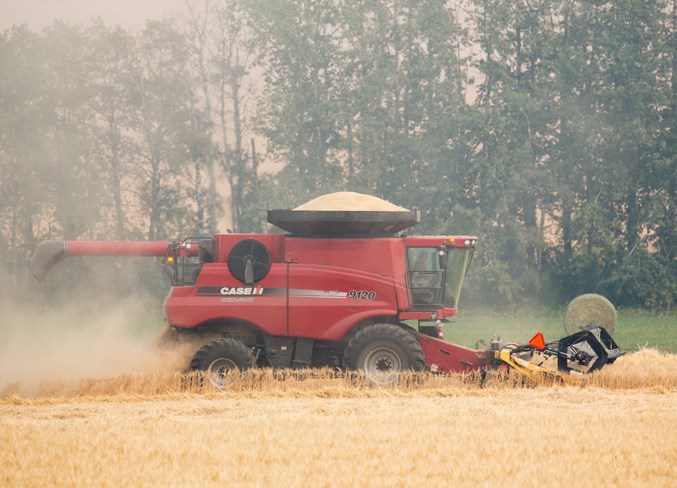Hot, dry conditions in the region this summer hasn’t been great news for some producers in the region, the Mountain View County agricultural service board heard.
During last week’s regularly scheduled board meeting in council chambers, Grant Lastiwka, with Alberta Agriculture in Olds, gave the board an update on the impact of this summer’s weather.
“It has been a bad summer for the forage side of things and for those that have pastures or hay simply because it was so dry last year, in the later part of the year, which travelled over into this year,” said Lastiwka.
“Some people did graze their pastures pretty hard last year and their perennial forages for hay are experiencing a second year where they have had a long dry spell and the heat that is present with it has been hard.”
The agriculture services board is made up of members of the public at large and county councillors. It advises the county and province on agriculture-related issues and concerns.
Summer 2018 has seen some very warm conditions and little sustained rain in the county and surrounding areas.
The result has been a reduction in yields, members heard.
“The huge heat combined with the lack of moisture through the fall (of 2017) has meant that a lot of crops have matured with lower yields, lower bushel weights, and with that in mind, some crops are going to end up being crops that are going to go in the feed industry because of the salvage value wheat better than the cropping value for grain,” he said.
“Instead of human market consumption or instead of being a barley grain product, it might well end up being a barley green feed product since our feed prices this year are about double what they have been in the past. The yield is certainly down too, so in many ways it is offsetting that as well.”
The impacts of the poor conditions this summer will likely have an impact this winter, he said.
“What we are going to look at this winter is a longer season of feeding, it certainly appears,” he said. “And with that in mind, whether it is a 240-day feeding period versus the 175 that we have been looking at in the past. So more feed required and more cost to the feed.”
Asked if good rainfall between now and the fall would help improve the situation, he said, “It’s pretty much too late. Depending on those pastures that have got quite a bit of health and vigour to them, they will respond with some growth, but the fact is that we are starting to get the shorter day lengths and in many ways the crops are coming down for combining.
“So the moisture that we get now might help the spirits of people more than forage growth.”
Agricultural service board members accepted Lastiwka’s report as information.
Last week Alberta Beef Producers (ABP) chairman Charlie Christie, who farms near Olds, reportedly said regarding the current drought: “We could squeak by at best, if it started raining. Worst-case scenario is it dries up, and provincewide we just don’t have enough feed. You’re going to see a liquidation of the cow herd.”
The ABP issued the following information on drought management strategies:
“Whether in the form of pasture, stored forage, or supplements, feed is the largest variable input cost in cow-calf operations. A big challenge is to feed the cow in a way that meets her current and future nutritional requirements for maintenance, lactation, maintaining a successful pregnancy, giving birth and getting rebred within 80-85 days of calving as cost effectively as possible.
"This challenge is obviously much greater during drought, when feed is scarce and expensive.”
More drought management information is available on the ABP website.



